About half of the startups I speak with are not meeting their revenue goals for 2024.
What can you do to right the ship?
Where should you reinvest your budget to retool your marketing strategy?
Fortunately, there are several things you can do to be in a good spot for the remainder of the year.
Here are 6 actionable tips that’ll help you build your brand in 2024.
Key Marketing Tactics for 2024
1. Offer your customers value across different marketing channels
One marketing tactic you may want to employ in your 2024 marketing strategy is offering value to customers across different channels. Understand what’s currently working and what isn’t, and improve your strategy based on those findings.
Don’t rely on the same marketing channels you’ve used in the past just because you have a history with that channel. For instance, you may have spent money on radio advertising previously. However, radio ad revenue has plummeted due to people not commuting as much. Always test to see the most profitable marketing channels.
These days, every dollar counts. Understand the value each channel brings to the sales equation. Know where your money is going by assigning a value to each channel based on touchpoints in a customer’s journey.
Using multi-touch attribution, you can track a series of touchpoints through the sales funnel and assign a revenue credit to each touchpoint. In a custom multi-touch model, the weight of each touchpoint depends on your industry, the buying behavior of your prospects, and your marketing organization’s channel mix.
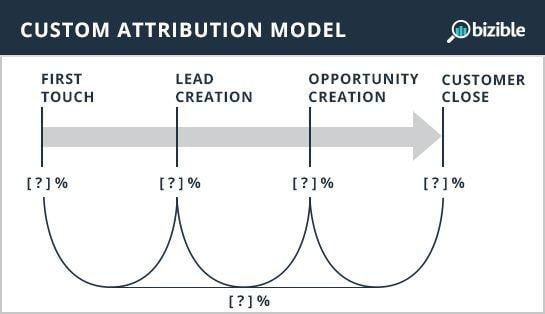
Image credit: Bizible
If you’re just starting off, you can use a linear attribution model to assign values proportionally across all channels, both online and offline. First, give equal weight to each touchpoint when first setting things up, then assess the percentages after you analyze data and further measure the overall value of each touchpoint. You should end up with a custom attribution model.
Whatever attribution model you use, make sure your model is omnichannel, meaning it includes both traditional and digital channels, point-of-sale, in-store, and online experiences.
The goal is to determine the value of each touchpoint to help decide if you should spend more or less or stop that channel or activity in your future marketing efforts.
Get a Free
Paid Media Analysis
Go beyond leads and understand the ROI of your paid advertising channels.
We’ll review your ad results and CRM to deliver an actionable
report with insights on how to grow more efficiently.
Get a Free
Custom Audience Report
Learn where your audience is to maximize your marketing investments.
Fill out the form below and we’ll be in touch with your report.

2. Build social proof to gain customer trust
Due to lockdowns and stay-at-home orders, people are consuming an unprecedented amount of media. Even as the quarantine is lifted, people’s habits have changed.
Remote work options and virtual schooling are becoming the new norm. Many of us are turning online for business and personal needs.
Web browsing has increased by 70%, and social media engagement has increased by 61% over regular usage rates. Customer sentiment about your company and product is more invisible than ever. Now is the best time to build up social proof with reviews and testimonials.
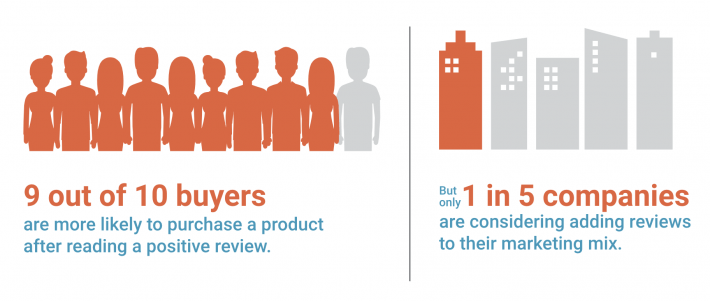
Image Credit: G2
Customers (and especially B2B customers) are more budget-conscious and may take longer to make purchase decisions. Social proof like reviews is invaluable to customers on the fence about spending limited dollars on your product. In fact, 92% of business professionals are more likely to purchase a product or service after reading a trusted review about the company.
You may not have many reviews. If you’ve had any customers who had to pause or leave for financial reasons, it’s a good time to ask for feedback. Make sure your business is listed on review sites that hit a variety of your target audience. Some of my personal favorites include:
Customer reviews do not have to be challenging to implement into your existing marketing strategy. Make it easy for your customers to leave a review by including links on your emails, invoices, and website.
3. Invest in content marketing to reach customers online
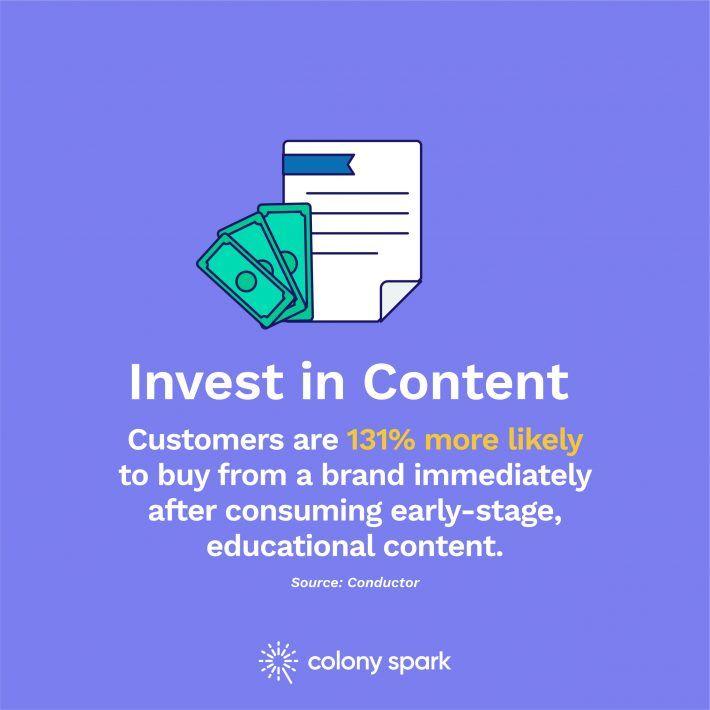
Reviews aren’t the only piece of content consumers are looking at online. As stated before, customers are taking longer to make purchase decisions due to budget restrictions. They are educating themselves on products and services before considering investing in them.
Having good content makes customers more likely to buy from your business. According to a survey from Conductor, customers are 131% more likely to buy from a brand immediately after consuming early-stage, educational content. And the average customer engages with 3-5 pieces of content before talking to a sales rep. Investing in educational content as a part of your 2024 marketing strategy is probably a smart idea. What qualifies as educational content?
- Case studies. These describe how your business has solved a common challenge in a target industry and what the results of solving it were. Case studies work for two reasons. First, they leverage the companies you have worked with who are willing to back your product. Second, they demonstrate value by focusing on the customer experience. The best way to get more case studies is to ask former clients if they’d be interested in interviewing for one.
- White Papers. These are used in 76% of business decision making efforts for B2B customers. White papers focus on an individual product by explaining the key features, functions, and benefits of the offering.
- Infographics. These are a powerful tool that helps customers easily digest information through the use of visual data, charts, and statistics. Graphics are the best way to communicate information because 90% of the information sent to the brain is visual.
Retarget customers with different types of content for different sales funnel stages. For example, use ads to attract leads; video and infographics in the discovery phase; blog and social media to engage prospects; and in-depth white papers for more qualified prospects.
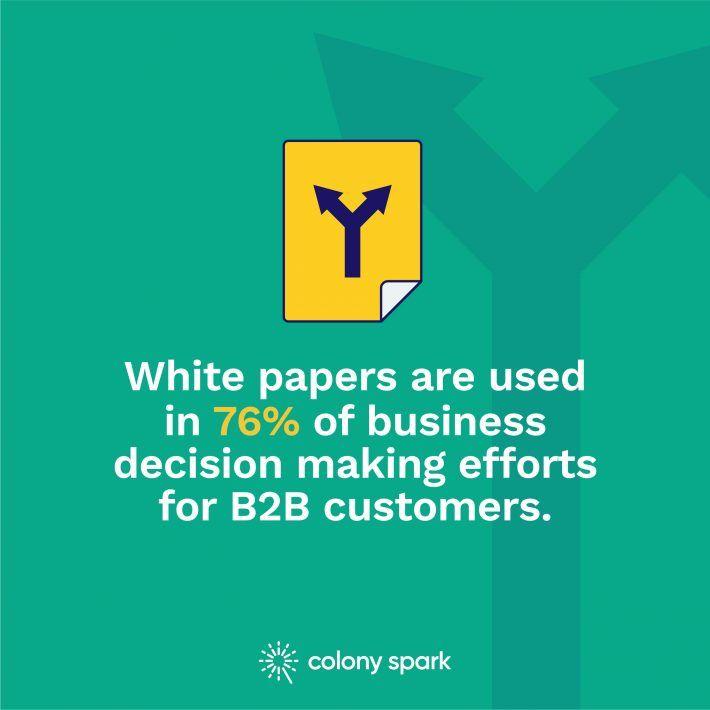
4. Review your promotion strategy
You could be using valuable advertising spend on channels that aren’t as active anymore. As mentioned previously, social media engagement rates have soared. Facebook, Instagram, and Google ads are some staples but consider trying other channels (depending on your audience). Some advertising channels you may not have thought of include:
- Quora
- Podcasts (Podcorn.com)
- Email newsletters (Paved.com)
- TikTok
Focus on organic growth if you have limited advertising funds. Consider contributing to Quora or Reddit in addition to industry-specific forums.
With social distancing and isolation happening right now, even more people are communicating through email.
It’s crucial to grow your email list. For every $1 marketers spend on email marketing, they can generate $42 in return. That’s an average ROI of 42:1.
Create landing pages designed for lead generation, such as collecting email subscribers in exchange for some type of content upgrade (such as an ebook or guide). Other email collection methods to use include pop-ups on your website and call-outs in your blogs or promotions.
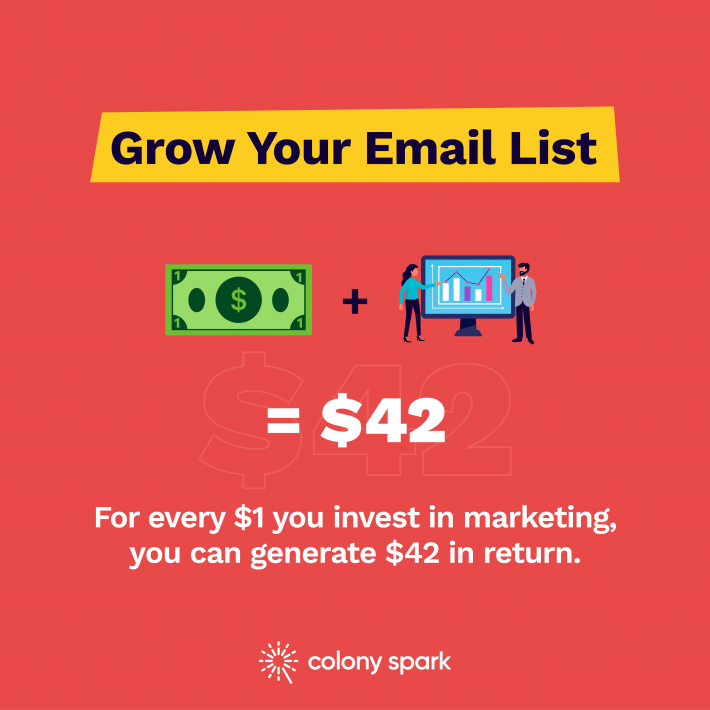
5. Build partnerships with more established companies
Part of your 2024 marketing strategy should include partnering with other businesses. Partnerships better serve customers by merging talent, expertise, technology, and purpose. Be sure to define what you want out of a partnership and your business goals.
Work with businesses that offer complementary services – e.g., companies who interact with the same type of customer, but who don’t offer the same services. Your business partner should already have lots of customers, meaning they should have a sizable customer email database, etc.
An example campaign in a partnership could be a Reciprocal Referral program. In a Reciprocal Referral campaign, you’ll recommend your partner’s services to your customer email list, and she’ll recommend your services to her customer email list in return.
Think of these partnerships as long-term relationships rather than one-time promotions. Partnerships are valuable assets. Keep up this type of promotion to keep the business connection alive and strong. Expand your partnerships to other businesses on an on-going basis, so you can benefit from the exposure to even more new customers.
Get a Free
Paid Media Analysis
Go beyond leads and understand the ROI of your paid advertising channels.
We’ll review your ad results and CRM to deliver an actionable
report with insights on how to grow more efficiently.
Get a Free
Custom Audience Report
Learn where your audience is to maximize your marketing investments.
Fill out the form below and we’ll be in touch with your report.

6. Experiment but know when to stop
To thrive in 2024, you may need to experiment with new methods of doing business to bring in customers.
You may have begun presenting all your demos online. How can you do it better? Some tools to look into include:
Conferencing
E-Signatures
Finding your footing in this new environment can be tricky. Experimentation allows your company to pursue more than one opportunity to discover which one has the most potential. You can discover new product and service opportunities that more directly cater to current customer needs.
Conclusion and Closing Thoughts
Wrapping Up
Adjusting your marketing strategy in 2024 to fit the current climate is key to grow your opportunities this fall and winter.
Essential tactics include:
- Offering your customers value
- Building social proof
- Investing in content marketing
- Reviewing your promotion strategy
- Building strategic partnerships
- Experimenting with new modes of doing business
In the long run, you will discover these winning strategies will help you maintain business and emerge stronger by the year’s end. Adjust and improve your current marketing strategies now so you can be more competitive in the future. You may even decide to retain some of these tactics because they will also work during normal times. Keeping up with marketing in a mindful way will allow you to increase and retain customers and improve revenue.
Get a Free
Paid Media Analysis
Go beyond leads and understand the ROI of your paid advertising channels.
We’ll review your ad results and CRM to deliver an actionable
report with insights on how to grow more efficiently.
Get a Free
Custom Audience Report
Learn where your audience is to maximize your marketing investments.
Fill out the form below and we’ll be in touch with your report.



